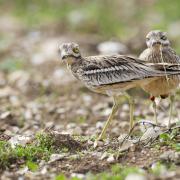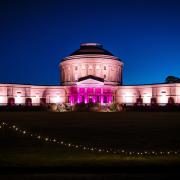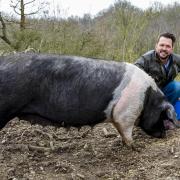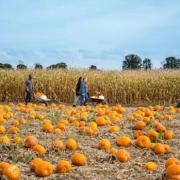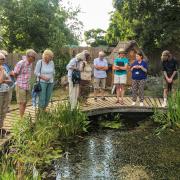Suffolk author and naturalist, Jeremy Mynott, has, of course, included his beloved county in his new book, The Story of Nature, A Human History, which looks at the different ways human kind has responded to nature over the centuries. Here we share an exclusive extract which focuses on an ancient forest, near Butley...
Staverton Thicks is a fragment of ancient forest near Butley in Suffolk. It’s like a child’s idea of a haunted wood, straight out of one of the Grimms’ fairy stories as illustrated by Arthur Rackham, full of mysteries, magic and surprises.
There are huge gnarled oaks and some of the tallest hollies and rowans anywhere in Britain, all tangled together in a wonderful confusion of trunks and branches. It’s quite dark in places, but there are also sunny glades where a forest giant has crashed to the ground and torn a rent in the dense canopy. Trees lie where they fall, decaying undisturbed, and you have to pick your way over and round them. You feel like an explorer in uncharted territory, enjoying a deep sense of seclusion and remoteness. It’s easy to lose one’s sense of direction and there are only animal tracks to guide you – but to where?

The Thicks is a haven for wildlife. Insects, beetles and other invertebrates abound in the deep leaf litter and the rotting timber, which is also home to a rich assemblage of lichens, mosses and fungi. The massive trunks of the fissured and hollowed oaks provide perfect nesting sites for birds like owls, redstarts, woodpeckers, tits, treecreepers and flycatchers, as well as bats, which have a ready food source in the hundreds of moth species recorded in the forest. You never know what you might find here. I have watched shy hawfinches foraging the forest floor in winter, I have nearly trodden on a new-born fawn, and on one memorable May day I even heard the fugitive, bell-like song of a golden oriole from somewhere in the upper canopy. Anything seems possible.
The Thicks looks completely unmanaged and unspoiled, perhaps some miraculous survival from the primeval wildwood that once covered much of Britain after the last Ice Age. But no, it has a history, a human history. It is ancient, to be sure, but was at some stage the result of human plantation, or more likely a succession of replantings.
Staverton lies in the Suffolk Sandlings, an extensive area of lowland heaths which were quite sparsely wooded in medieval times, and the Thicks was once just a small part of Staverton Park, a much larger thirteenth-century hunting estate.

We don’t know if the Thicks itself was wooded at that time, but the current wooded area dates from considerably later. There’s a lovely story one would like to believe that the land was once farmed by the
monks of the nearby Boyton Priory, who before the dissolution of the monasteries in 1538 were told that they could take just one last crop from their land. So they planted acorns.
Certainly, some of the oldest oaks are more than 400 years old, but many are much younger, and the Thicks seems to have been separated from the rest of Staverton Park only from about 1820.

Ecologists like George Peterken and Oliver Rackham have pieced together the probable history from a combination of tree and vegetation analyses, aerial photos and documentary evidence, but it is a complex story.
Meanwhile, the wildlife in the Thicks has been changing too. In a charming memoir published in 1950, Hugh Farmar, the occupant of the little cottage that stood at the entrance to the Thicks, tells us
of the familiar sights and sounds he then enjoyed of species like nightingales (going), spotted flycatchers (going), red squirrels (gone) and even wrynecks (long gone). He wistfully wonders if the place shouldn’t be made into a nature reserve one day.

He had his wish, sort of. The Thicks is now protected by multiple official designations, including a Special Area of Conservation (SAC) and a Site of Special Scientific Interest (SSSI), and it is the subject of a sixteen-page Natural England ‘maintenance and restoration management plan’.
These are important safeguards. There are powerful commercial and political interests which will claim, may even believe, that you can just ‘offset’ an ancient woodland with a planted one. It’s all ‘nature’ after all, isn’t it? But the conservationists have questions to answer, too. When, if ever, was the Thicks a ‘natural woodland’? When exactly in its long historical evolution was the condition we now wish to mark as the one to conserve or revert to? What exactly are we protecting here, anyway – a history, an ambience, a landscape, a habitat, a resource, various special species? And if the last, why are some species more
important than others? Should we ‘let nature take its course’, which over time would probably degrade the place as a habitat, or should we manage it to retain its present character and value? Will the magic of the Thicks slip through our clumsy bureaucratic fingers?

The history of the Thicks is part of its current identity. That’s true of towns, countries and people, too. You can forget or ignore or try to conceal your history, but you can’t erase it. It largely explains what you now are. And it has been the argument of this book that this is true also of the constellation of concepts through which we define our interests in nature and the natural world. They have their own history and in
and in the twentieth and twenty-first centuries they have circled especially around ideas of conservation and the environment.
Blob par: The Story of Nature, A Human History by Jeremy Mynott is available in hardback, published by Yale University Press from September 10. Price £25
Jeremy Mynott’s books include Birdscapes: Birds in Our Imagination and Experience, the Wolfson History Prize nominated Birds in the Ancient World and The Consolation of Nature. He is an emeritus fellow of Wolfson College, Cambridge, and was formerly Chief Executive of Cambridge University Press.

Liz Nice finds out more about author Jeremy Mynott's Suffolk roots and how the county inspired his love of nature
What are your favourite memories of growing up in Suffolk?
Two particular things: the freedom my parents gave me to roam – today’s parents have become far more protective and restrictive; and the sheer amount of wildlife I encountered then – a natural abundance we have now largely lost. In the Preface to my book, I mention watching a pair of nesting red-backed shrikes from my bedroom window as a child – now long extinct as breeding birds in the county.!
Which are Suffolk's best places to visit for nature lovers?
There are wonderful RSPB and SWT reserves where you can be sure to see a wide range of local species and there are miles of beautiful coastline to discover and explore for yourself. But you can find treasures and inspiration everywhere if you look, listen and learn.
What are your favourite places in Suffolk?
One of the great things about Suffolk for a naturalist is the variety of habitats. I love the ancient woodland at Staverton Thicks, the coastal flora at Orford Ness and the heathland birds and butterflies on Hollesley Heath. Then there is the lovely River Stour, which my wife and I walked from source to sea for our honeymoon.
What is the idea behind your book and what inspired it?
Nature has long been the source of human curiosity and delight and the inspiration for some of our deepest creative impulses, but today we are witnessing its rapid impoverishment, or even destruction. How did we get to this point, where we are losing this most precious feature of our green planet, just as we are more fully understanding its workings and our own place in them?
What was the most surprising thing you discovered in the course of writing it?
That you can read the whole of recorded human history, from the prehistoric cave-painters through to Greta Thunberg’s school-strikes, as a continuous commentary on our place in nature.
What are your favourite things to do in Suffolk for fun?
Walking, wandering and wondering. And Suffolk has such a rich heritage of art, music and history that you can find cultural as well as natural stimulation almost everywhere. Indeed, much of our culture has been inspired by nature: Constable, Britten and a host of modern nature writers born or now living in Suffolk like Ronald Blythe, Helen Macdonald and Melissa Harrison.
What do you worry about nature-wise?
I have a chapter on future nature, speculating on the likely effects of global warming, increased urbanisation, dramatic changes in land use and a cultural disconnection from the natural world related to a growing reliance on online communications and entertainments.
How has our attitude to nature changed over the centuries?
Nature has always been a source of wonder but, by stages, from the prehistoric world through to the 21st century, the human species has progressively become the dominant one, to the point today where the one species capable of understanding the current crisis is also the one to have caused it. That gives us a very special responsibility.
How hopeful do you feel about the future?
I feel hopeful but not optimistic. Hopeful because there is still time to make a difference and we now know why it matters, but not optimistic because there is a mismatch between what is scientifically necessary and what seems to be politically possible. And here comes climate change too, making everything many times worse.
Why should we read your book?
To rediscover some voices from the past that enrich our sense of what nature means to us and speak to our current predicaments. To restore our sense of wonder.
To buy the book, visit yalebooks.co.uk






